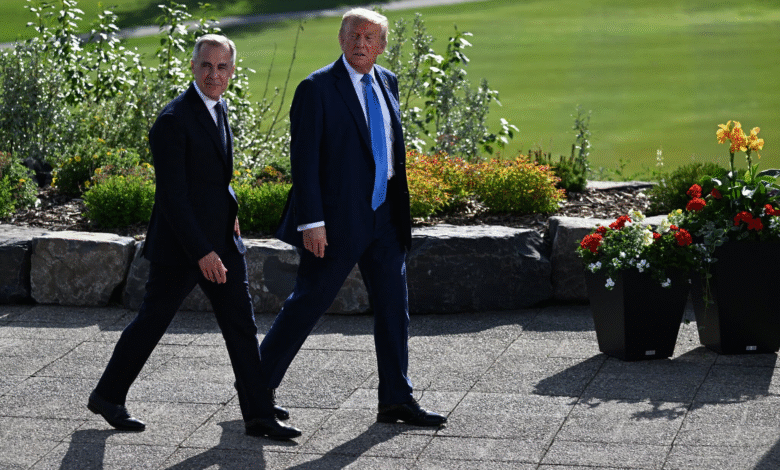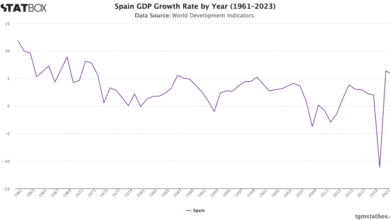Trump Canada Tariffs: An Announcement of 35% Duty

In a bold move that has set the stage for increased tensions, Trump Canada tariffs were announced on Thursday, with U.S. President Donald Trump imposing a staggering 35% tariff on imports from Canada, effective August 1. This decisive action comes as Trump cited fentanyl trafficking and retaliatory tariffs from Canada as key justifications for the steep rate. Highlighting the importance of cooperation, he suggested that this hefty duty may rise should Canada continue its countermeasures. With existing sectoral tariffs already placing a burden on trade, the latest development signals a significant shift in U.S. tariffs on Canada, potentially impacting various industries and the overall economic landscape. As both nations navigate these turbulent waters, the implications for Canada trade relations appear profound and far-reaching.
The recent imposition of tariffs by the Trump administration has thrown a spotlight on the broader context of trade relations between the U.S. and Canada. With significant obstacles like a 35% import duty now in place, the economic dialogue is at a crossroads, further complicated by issues like fentanyl trafficking and previous retaliatory measures. This situation underscores the intricate nature of Trump trade policy, which continues to evolve amid changing political dynamics. As both nations seek to address these challenges, the repercussions for businesses and consumers alike could be substantial, leading to a reevaluation of their longstanding bilateral partnership. The unfolding saga of U.S. tariffs on Canadian goods invites scrutiny and discussion on how best to navigate this increasingly contentious trading environment.
Impact of Trump’s 35% Tariff on Canadian Imports
President Trump’s announcement of a 35% tariff on Canadian imports marks a significant escalation in the ongoing trade tensions between the United States and Canada. Set to take effect on August 1, this tariff comes on top of existing sectoral tariffs that already impose a 25% duty on certain imports. Trump’s justification for this hefty tax hinges on issues related to fentanyl trafficking, as he cited Canada’s failure to adequately address the drugs crisis as a key concern. With the backdrop of escalating tariffs, many industry leaders are beginning to worry about the potential repercussions on trade relations, with both countries at risk of being locked in a cycle of retaliatory measures.
The potential increase of Trump’s 35% duty contingent upon Canada’s response adds another layer of complexity to this already fraught situation. As Canadian imports face steep tariffs, businesses that rely on these supplies may grapple with increased costs that could lead to higher prices for consumers. The ongoing tensions not only threaten individual businesses but also have the capacity to reshape the broader economic landscape of U.S.-Canada relations. As companies begin to weigh their options, many are left wondering if any compromise can be reached before further tariffs are introduced, putting trade negotiations in a precarious position.
The Role of Fentanyl in U.S.-Canada Trade Relations
Fentanyl trafficking has emerged as a pivotal issue impacting the fragile trade relations between the U.S. and Canada. President Trump explicitly tied the newly proposed tariffs to Canada’s perceived inaction regarding this crisis, emphasizing the importance of cooperation in combating drug trafficking. As fentanyl continues to be a leading cause of opioid overdose deaths in the United States, the U.S. administration sees Canada’s response as a litmus test for bilateral relations. Trump has made it clear that tariff adjustments will depend on Canada’s efforts to stem the flow of fentanyl into the U.S., indicating that trade policy and public health are increasingly intertwined in this negotiation.
The implications of the fentanyl issue extend beyond tariffs; they highlight a broader concern about drug-related crimes and health emergencies. As trade talks resume, Canadian authorities find themselves at a crossroads, needing to devise strategies to address U.S. concerns while also protecting their own economic interests. Understanding and effectively communicating the steps taken against fentanyl trafficking might play a crucial role in mitigating the impact of the tariffs and salvaging ongoing trade relations. Both sides must prioritize finding common ground to foster a more cooperative relationship, addressing the drug crisis while ensuring economic stability.
Trump Trade Policy and Its Effects on Canada
President Trump’s trade policy has been marked by an ‘America First’ approach, prioritizing U.S. interests often at the expense of traditional allies like Canada. The imposition of a 35% tariff reflects a broader strategy of utilizing tariffs as a bargaining chip in negotiations. Trump’s use of tariffs is not merely a tactic against Canada; it represents a foundational shift in how the U.S. engages in international trade relations, moving towards more aggressive and confrontational measures. The trade policy has raised alarms about potential ripple effects throughout the North American economy, as businesses wrestle with the increasing unpredictability of trade laws.
Additionally, this trade stance has prompted some Canadian sectors to call for reevaluation of their reliance on U.S. markets, urging diversification of trade partnerships. As Canada evaluates the ramifications of the Trump administration’s policies, many industry leaders underline the need for Canada to bolster its trade relationships with other nations and mitigate the risks associated with an over-reliance on the United States. This shift could lead to innovative solutions and new avenues for economic growth, but it will require careful navigation of the increasingly contentious trade environment.
Navigating the Retaliatory Tariffs
The landscape of U.S.-Canada trade relations has increasingly been characterized by a series of retaliatory tariffs that complicate any efforts for compromise. Following Trump’s announcement of steep tariffs, Canada’s response in kind indicated a willingness to engage in a tit-for-tat strategy, which exemplifies the cyclical nature of such trade conflicts. The back-and-forth between the two nations illustrates how quickly relations can sour, with each side responding to perceived injustices from the other. For businesses on both sides of the border, this cycle of retaliation could lead to an unstable environment that ultimately harms consumers by driving prices higher and limiting choices.
The strategic considerations for both countries become vital in understanding the mechanism of these tariffs. Companies must evaluate their reliance on cross-border supply chains while anticipating shifts in trade policy that could have immediate effects on costs and availability of goods. This uncertainty is particularly challenging for industries dependent on stable trade relations, such as automotive and agriculture. As negotiations continue, both the U.S. and Canada face the need to balance domestic pressures with international trade obligations, which could define their economic futures.
The Future of U.S.-Canada Trade Agreements
As trade talks recommence after the imposition of tariffs, the future of U.S.-Canada trade agreements hangs in the balance. The evolving nature of these negotiations reflects a broader trend in global trade, where countries must navigate not only economic interests but also political pressures from various interest groups. Trump’s aggressive tariff strategy has prompted both sides to rethink their strategies, highlighting the need for a reassessment of trade agreements like USMCA to address emerging challenges. Future trade agreements will have to include robust mechanisms to handle retaliatory actions and set rules to manage conflicts over issues like fentanyl trafficking.
The intricate interplay between domestic policy and international agreements will likely shape the direction of U.S.-Canada relations moving forward. Stakeholders on both sides must champion dialogue and cooperation to ensure that tariffs serve not as barriers but as tools for incentivizing compliance with crucial issues, such as drug trafficking. Ultimately, the resolution of current tariffs and the success of forthcoming agreements will depend on the ability of both nations to align their priorities, fostering a collaborative environment moving ahead.
Economic Implications of Tariffs on Canadian Goods
The economic implications of the 35% tariff on Canadian goods are significant and multifaceted. This tariff not only increases the cost of importing goods from Canada but also complicates supply chains reliant on Canadian resources. Various sectors, including manufacturing and agriculture, face the brunt of these additional costs, which will likely be passed down to consumers. The imposition of higher tariffs could lead to inflationary pressures, affecting everyday life for U.S. citizens while straining the financial viability of businesses that depend heavily on Canadian exports.
Moreover, the tariff escalation echoes concerns about broader economic repercussions, where retaliatory tariffs could spark a significant downturn in bilateral trade. As businesses prepare for these changes, many may be forced to reconsider their operations and supply chain strategies, leading to potential job losses in both nations. The interconnected nature of the economies means that any disruptions in trade due to tariffs could resonate throughout the North American market, highlighting an urgent need for collaborative policymaking to stabilize and secure both U.S. and Canadian economies.
The Dangers of Escalation in Trade Policy
The dangers of escalating trade policies have never been more apparent than in the current U.S.-Canada dynamic. The decision to apply a 35% tariff has set a precarious precedent where further retaliations could lead to a full-blown trade war, threatening the stability that both economies have enjoyed for decades. Economic experts warn that an escalation in tariffs might not only harm the bilateral relationship but could also disrupt global supply chains, ultimately affecting international markets. The reaction to these policies may ripple through other economic partners, prompting a reassessment of trade agreements worldwide.
Furthermore, this escalation could have long-lasting repercussions for international relations, as countries may begin to view tariffs as a primary tool for negotiation rather than a last resort. The shift in trade policy under Trump has created an uncertain landscape, where predictability in trade relations becomes increasingly difficult to maintain. Both nations must tread carefully if they wish to avoid escalating tensions and ensure smooth trade going forward, potentially leading to an environment where negotiation, rather than coercion, becomes the norm.
Trade Negotiations: Challenges Ahead
As trade negotiations between the U.S. and Canada resume, significant challenges lie ahead for both parties. One of the pressing issues is how to address the concerns surrounding tariffs while restoring relations that have been strained by recent policy decisions. The uncertainty generated by heavy tariffs complicates negotiations, making it essential for both sides to establish mutual trust and readiness to compromise. Additionally, external pressures, such as domestic political considerations in both countries, may influence the negotiating strategies employed by each side, complicating the path to a resolution.
Another crucial aspect of these negotiations is the need for a cohesive strategy that comprehensively addresses contentious issues like fentanyl trafficking. This requires transparent communication and a commitment to collaborative efforts that align with both nations’ interests. As historical tensions re-surface, both governments must be prepared with actionable plans that emphasize cooperation rather than competition to establish an effective framework for future trade agreements. Negotiators must also be vigilant about the external geopolitical landscape, as global trade dynamics are ever-evolving and present further complications.
Conclusion: The Path Forward for U.S.-Canada Trade Relations
In conclusion, the path forward for U.S.-Canada trade relations is rife with complexity and potential pitfalls stemming from heightened tariffs and escalating tensions. The recent 35% tariffs imposed by Trump underscore a shift towards more aggressive trade policies that may not bode well for future negotiations. Both nations must prioritize dialogue and understanding to navigate these turbulent waters effectively. As the world watches, finding a balance between protecting domestic interests and fostering international goodwill will be critical to mitigating future fallout.
Ultimately, the future stability of trade relations will rely heavily on the ability of both countries to engage in constructive conversations aimed at resolving core issues head-on. As tariffs reveal the fragile nature of economic interdependence, it is imperative that both the U.S. and Canada seek to foster a more robust and ultimately beneficial trading relationship. The outcome of current negotiations could set the stage for how both nations engage with each other and the world in the years to come, underlining the importance of diplomacy in achieving sustainable trade policies.
Frequently Asked Questions
What are the implications of Trump’s 35% tariff on Canadian imports for trade relations?
Trump’s 35% tariff on Canadian imports, effective August 1, could significantly strain Canada trade relations. By implementing this high rate, the U.S. aims to counteract what it views as unfair retaliatory tariffs from Canada and to address concerns over fentanyl trafficking. This could lead to increased tensions and further retaliatory measures from Canada, complicating future negotiations.
How does the 35% tariff on Canada affect U.S.-Canada trade negotiations?
The 35% tariff on Canada announced by Trump complicates U.S.-Canada trade negotiations by creating pressure for Canada to cooperate in addressing issues like fentanyl trafficking. The introduction of this tariff, alongside pre-existing tariffs, may hinder mutual agreements and require both nations to reassess their trade policies.
What are the current tariff rates on imports from Canada, including Trump’s announcement?
Currently, imports from Canada face a 25% tariff due to fentanyl trafficking concerns, but Trump’s recent announcement introduces an additional 35% tariff, effective August 1. This makes the total tariffs potentially rise to 60% if Canada enacts further retaliatory measures.
Why did Trump impose a 35% tariff on Canadian goods?
Trump imposed a 35% tariff on Canadian goods primarily due to Canada’s retaliatory tariffs and ongoing concerns about fentanyl trafficking. He indicated that cooperation from Canada could lead to a reconsideration of these tariffs.
What are the potential consequences if Canada escalates its retaliatory measures against U.S. tariffs?
If Canada escalates its retaliatory measures in response to the 35% tariffs, Trump has warned that these tariffs could be increased even further. This escalation could exacerbate tensions and lead to a trade conflict between the two nations.
How do the U.S. tariffs on Canada impact businesses and consumers in both countries?
The U.S. tariffs on Canada, including the new 35% rate, can lead to higher costs for Canadian goods in the U.S. market, resulting in increased prices for consumers and potential disruptions for businesses dependent on trade with Canada. Similarly, Canadian businesses may face challenges exporting to the U.S.
Will the introduction of a 35% tariff on Canada affect energy imports?
Energy resources imported from Canada currently have a reduced tariff of 10%. However, the introduction of a 35% tariff on other Canadian imports could indirectly impact energy trading by shifting market dynamics and pricing.
What led to the recent tensions in U.S.-Canada trade relations?
Tensions in U.S.-Canada trade relations escalated due to Canada’s digital services tax on American companies, which Trump opposed. Although Canada later repealed this tax to facilitate trade talks, the introduction of a 35% tariff reflects ongoing disputes over tariffs and fentanyl trafficking.
How might Trump’s trade policy towards Canada evolve in the future?
Trump’s trade policy towards Canada could evolve based on Canada’s response to the 35% tariff and its cooperation in addressing fentanyl trafficking. Future trade relations may hinge on Canada’s willingness to negotiate and revise its own tariff policies.
What options does Canada have to respond to the new 35% tariffs imposed by Trump?
Canada can choose to retaliate with its own tariffs, negotiate to alleviate tensions, or address the concerns raised by Trump regarding fentanyl trafficking. Their response will likely focus on balancing trade interests while protecting their economic interests.
| Key Point | Details |
|---|---|
| 35% Tariff on Canadian Imports | Effective August 1, announced by Trump. |
| Justifications for Tariff | Cited fentanyl issues and retaliatory tariffs from Canada. |
| Potential for Increased Tariff | Could be raised further if Canada escalates its response. |
| Existing Tariffs | Imports currently face a 25% tariff and a 10% tariff on energy resources. |
| Background on Trade Talks | Trade talks were set to restart after Canada repealed a digital services tax on U.S. companies. |
Summary
Trump Canada tariffs are set to significantly affect trade relations between the U.S. and Canada, with a new 35% tariff on imports from Canada coming into effect on August 1. This move, driven by concerns over fentanyl and Canada’s retaliatory trade measures, marks a substantial change in the trading landscape. As negotiations attempt to resume amid these tensions, monitoring the evolution of these tariffs will be crucial for understanding future U.S.-Canada trade dynamics.



